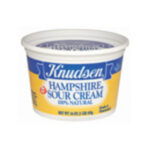Even though chewing gum has been around for thousands of years, it’s still a treat that’s enjoyed by children around the world as well as adults who can’t get enough of its assorted sweet and sour flavors. One habit that young chewing gum enthusiasts have practiced for ages is the art of swallowing gum. While adults look on in horror, children gleefully smile and swallow that wad of chewing gum that was keeping their mouth in motion just minutes earlier.
Somewhere along the way the idea came into existence that it’s bad to swallow gum. The information passed along with this idea was that swallowed gum enters the stomach and remains in the gut for seven years. It was also thought that swallowed gum may find its way to the appendix where it could stick and cause appendiceal problems and possibly even increase the risk of appendicitis. What are the effects of swallowing gum? Can you swallow gum safely?
Gum is composed of latex sap, or chicle, derived from a tree native to South America called the sapodilla tree. More recently, a synthetic version of rubber has replaced much of the chicle previously used for making gum. In addition to the rubber base, chewing gum has added flavorings, sweeteners, food colorings, and preservatives to give it flavor, add color, and keep it fresh. Because chewing gum sticks so readily to surfaces such as streets and sidewalks, it’s logical to think it might have the same effect when it enters the digestive tract. Many people believe that swallowed gum is likely to stick to the esophagus on the way down to the stomach.
Fortunately, many of the fears about swallowing gum are unfounded. The negative health effects of swallowing gum are generally overplayed by well meaning moms everywhere. When swallowed chewing gum enters the stomach, it’s true that the gum can’t be digested but it’s usually passed in its undigested form safely through the digestive tract into the colon where it can be excreted into the stool. Fortunately, this process doesn’t take seven years as so many wives tales have stated.
Although the health effects of swallowing gum have been overplayed, there are rare cases in the medical literature of children who are habitual gum swallowers developing bezoars of the intestinal tract and esophagus resulting in obstruction. A bezoar is a lump of indigestible matter that’s unable to pass successfully through the digestive system. Fortunately, this occurrence appears to be quite rare when you consider how many children and even adults worldwide swallow their gum.
One of the biggest dangers of swallowing gum in children is the risk of choking. If a child is so young that his chewing and swallowing mechanisms are less developed, he or she can run the risk of aspirating the chewing gum which can be a medical emergency. For this reason, children under the age of six should probably not be given chewing gum, particularly bubble gum.
For the average older child and adult, the effects of swallowing gum are probably not overly risk, although this practice should be discouraged in the very rare event that chewing gum could promote bezoar formation in the digestive tract. Otherwise chewing gum should be enjoyed and appreciated for the little touch of sweetness it offers.






